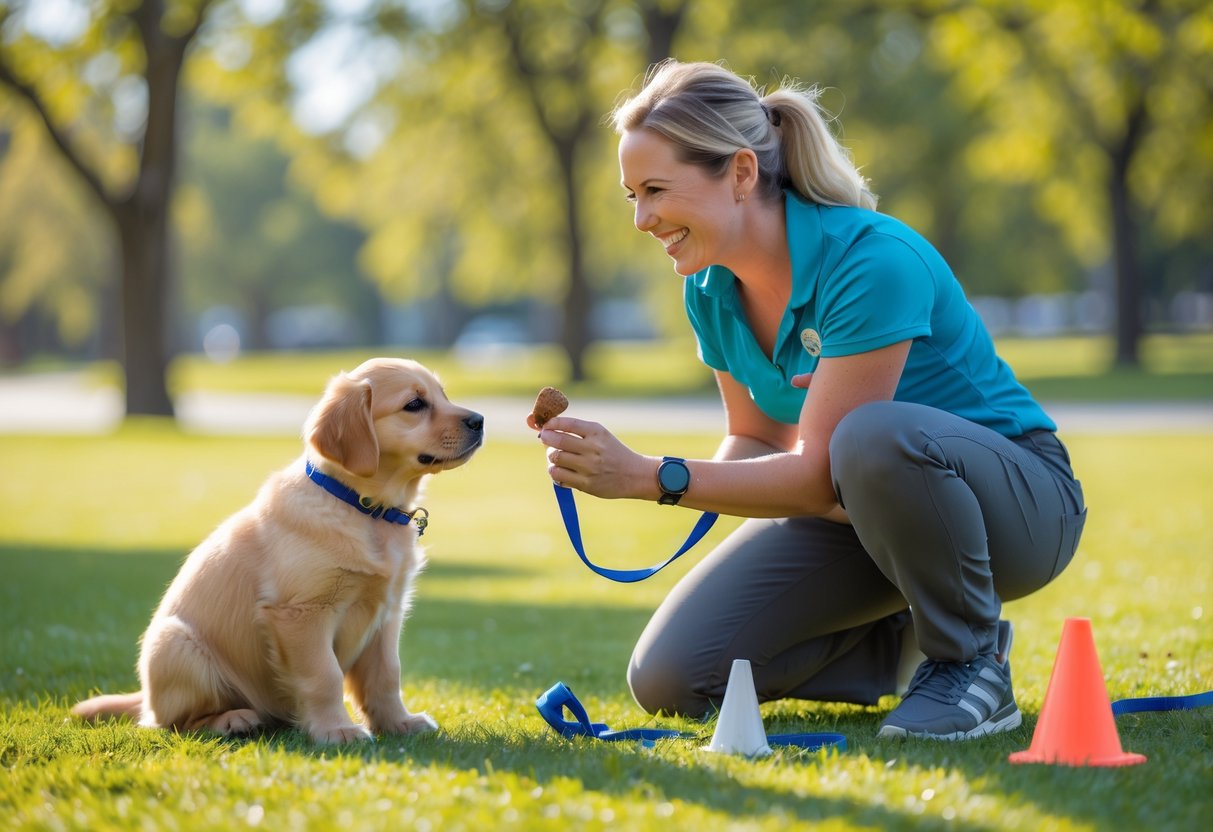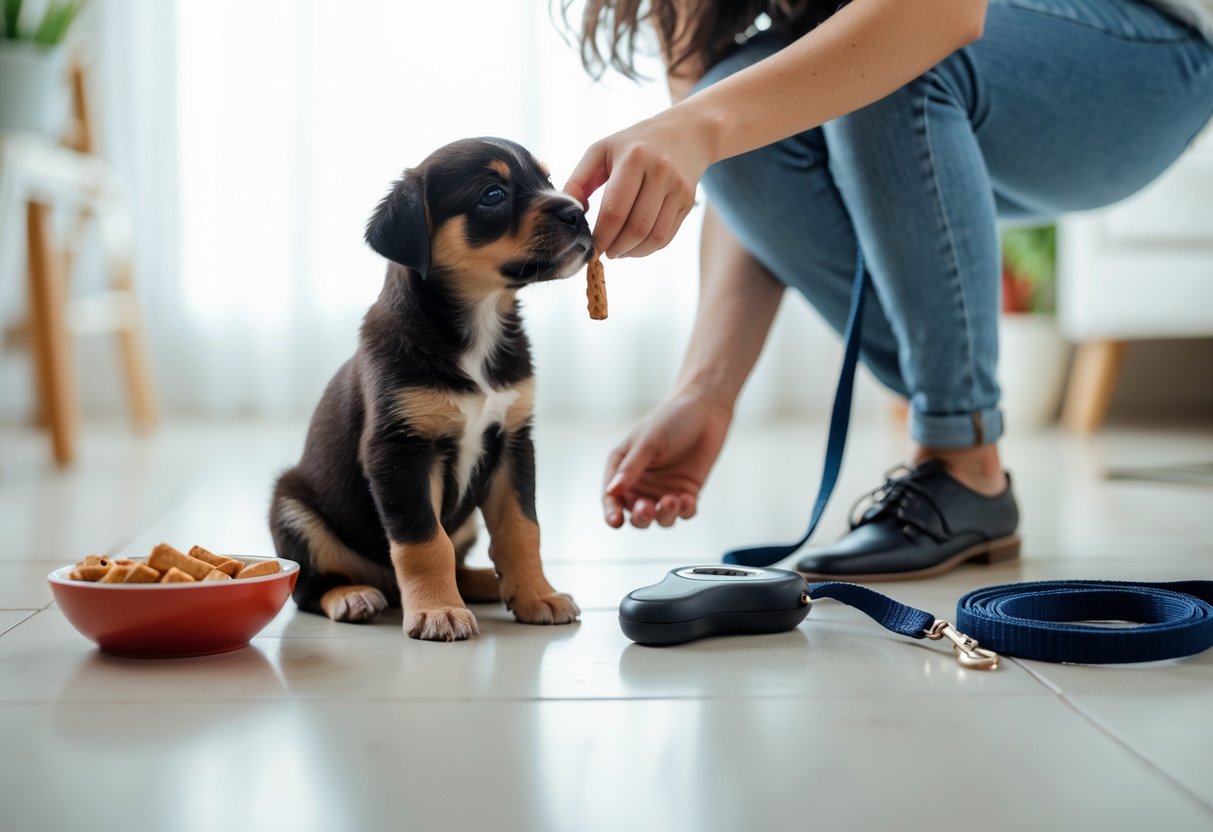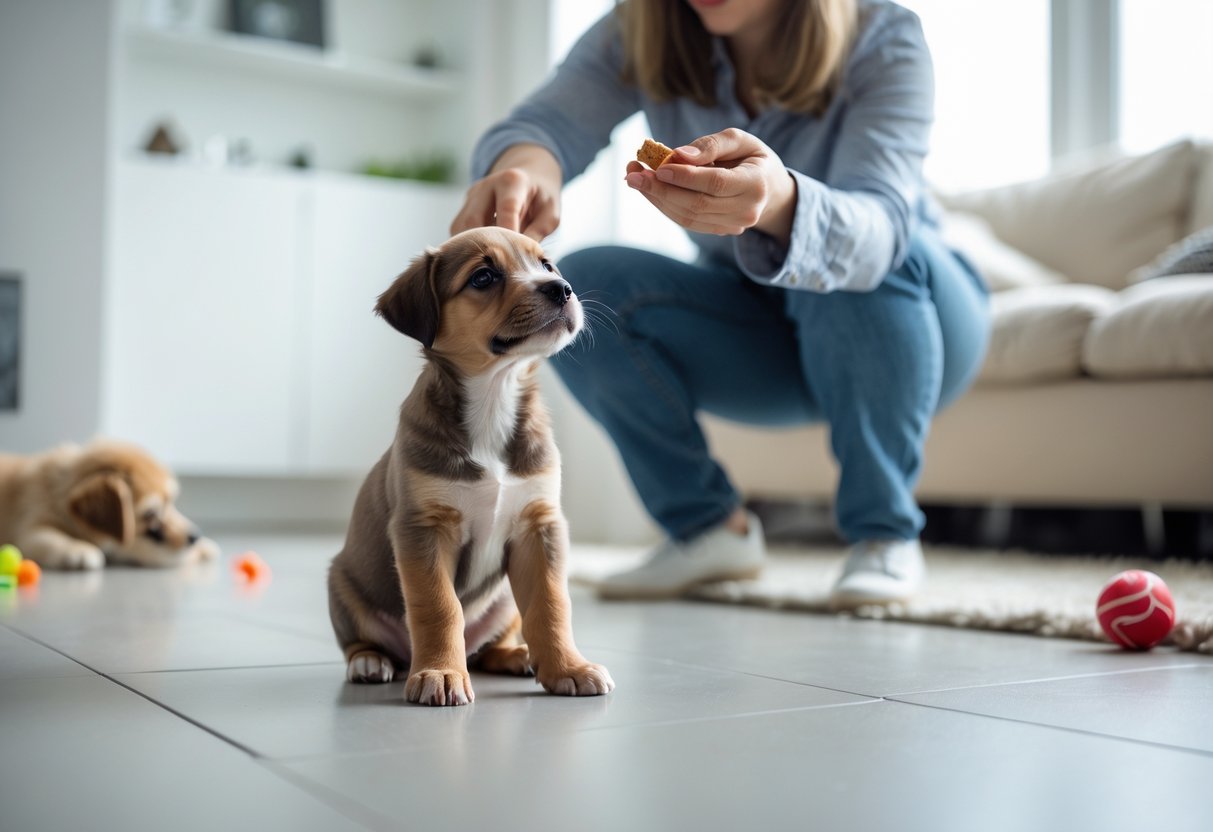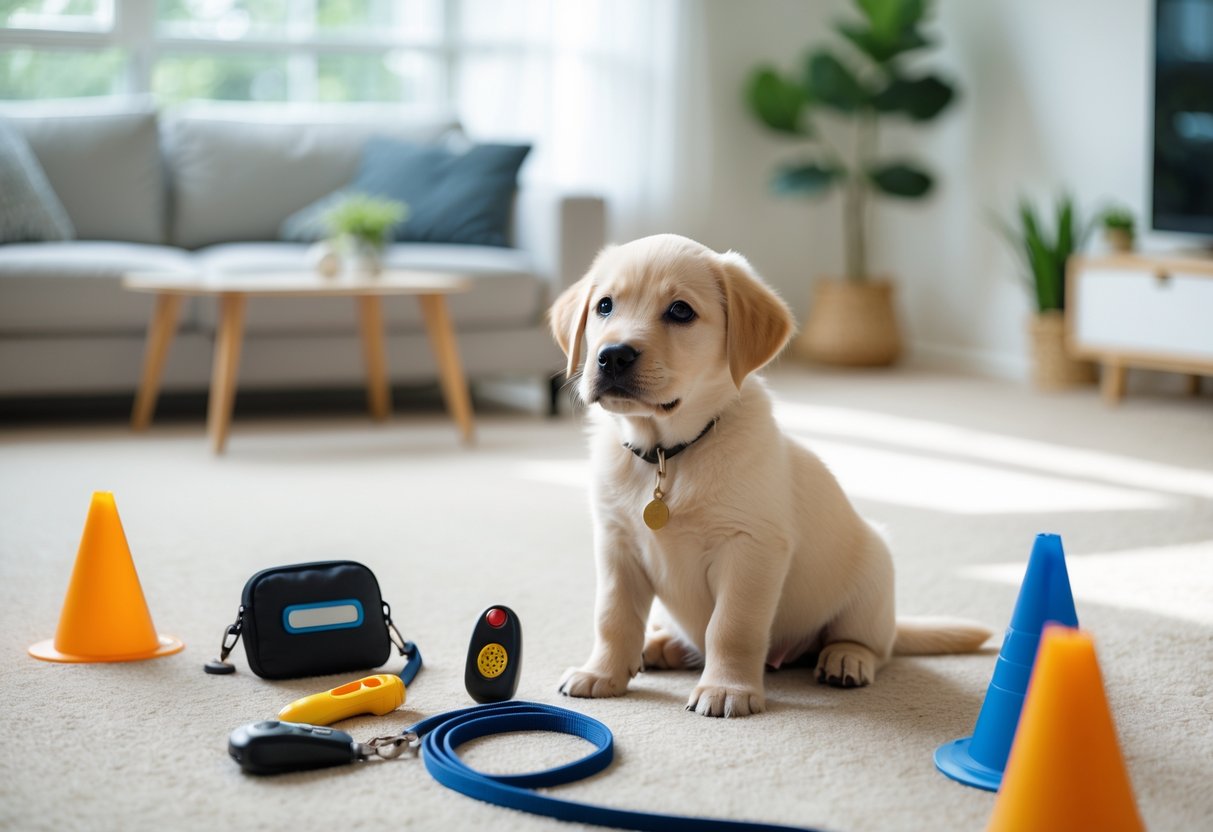Training your puppy can feel overwhelming at first. But honestly, it’s one of the best ways to build a strong bond and set your dog up for a happy life.
Using simple, positive methods to teach basic commands helps your puppy understand what you expect. Everyday life gets easier for both of you when you focus on rewarding good behaviour.

Your puppy learns all the time, so short, consistent training sessions make a big difference. Stick to the same words and signals each time—your puppy will catch on much faster and feel less confused.
Small steps like teaching your dog to sit, come, or stay build focus. Over time, you’ll notice your puppy’s confidence growing.
With patience and kindness, training your puppy turns into something you both enjoy. It’s a journey, but it’s worth it.
Key Takeaways
- Positive, clear training builds understanding and trust between you and your puppy.
- Consistent short sessions help your puppy learn without feeling overwhelmed.
- Patience and kindness make training enjoyable and effective for both of you.
Essential Puppy Training Principles
Getting started with your puppy training means creating good habits and a solid routine. Use gentle, effective methods to teach good behaviour and help your puppy feel safe and confident.
Simple, clear steps set the foundation for everything your puppy will learn. Don’t worry if it feels slow—every bit counts.
Setting Up Your Puppy Checklist and Routine
A clear routine helps your puppy know what to expect each day. Create a checklist: feeding times, potty breaks, play, training, and rest periods.
Puppies thrive on regular schedules, so writing it down keeps you organised. Your checklist might look like this:
- Morning potty trip
- Breakfast
- Short training session (5-10 minutes)
- Playtime
- Nap
- Lunch and potty break
- Evening walk and training
- Bedtime
Routine cuts down on accidents and helps your puppy relax. Consistency with potty breaks matters most for house training.
Set up a calm, quiet space for training. Fewer distractions mean your puppy can focus better.
Positive Reinforcement Methods for Puppies
Positive reinforcement means you reward your puppy when they get it right. Use treats, praise, or play—whatever your puppy loves.
Keep treats small and tasty to grab attention. For example, reward your puppy immediately when they sit or go outside to potty.
Praise with an excited voice so your puppy knows they’ve done well. Skip punishment or harsh corrections—redirect unwanted behaviour instead and reward what you want to see.
This builds trust and keeps training fun. You’ll see your puppy learn faster and feel more secure.
Building Confidence Through Socialisation
Socialisation is about helping your puppy meet new people, places, and animals in a safe way. This builds confidence and prevents fear or aggression down the line.
Start with gentle introductions at home—let your puppy meet visitors or family members. Later, take your puppy to quiet public spaces for short visits so they get used to new sights and sounds.
Puppy classes are great for meeting other dogs. Use treats and praise to keep things positive, and let your puppy explore at their own pace.
A confident puppy is happier and easier to train. If you want more guidance, check out this puppy training guide.
Core Puppy Training Skills
Training your puppy takes patience and a clear plan. Focus on routines, teaching good behaviour, and helping your puppy understand what you expect.
Consistent cues and positive rewards make learning smoother for both of you. It’s not always perfect, but progress adds up.
House and Potty Training Basics
House training is usually the first hurdle. Take your puppy outside often—right after meals, naps, or playtime is best.
Create a regular schedule so your puppy learns when and where to go. Use treats and praise right after your puppy does their business outside.
This builds good habits without causing fear. Be patient with accidents; they’re normal in the early days.
Clean up any indoor messes thoroughly to prevent repeats. Crate training helps too—puppies don’t like to soil their sleeping area, so a well-sized crate encourages them to wait until you let them out.
Never use the crate for punishment. It should always feel like a safe space.
Mastering Leash Walking
Leash walking can be tricky, but you can make it fun and safe. Start by letting your puppy wear a collar and leash indoors.
Let them drag the leash around so it feels normal. Begin training in quiet areas with few distractions.
Hold a treat to keep your puppy’s attention close to you. Reward them when they walk beside you without pulling.
If they pull, just stop and wait until they return to your side calmly. Keep sessions short and positive.
Use calm tones and gentle guidance. Once your puppy’s comfortable, try busier places for more practice.
Introducing Basic Training Cues
Basic cues like sit, come, and stay make life easier and keep your puppy safe. Start with sit—hold a treat near your puppy’s nose and move your hand up so they naturally sit.
Say the cue clearly and reward right away. For come, use a light leash and call your puppy in a happy voice. Reward them when they respond quickly.
Practice often in different places so your puppy listens, even with distractions. Keep training sessions short and fun, using praise and treats.
Consistency helps your puppy link words with actions. You’ll build trust and understanding together, one step at a time.
Frequently Asked Questions
Training a puppy takes patience and clear steps. Knowing how to set routines, pick the right commands, and handle housebreaking makes the process smoother.
Gentle methods and the right support help your puppy learn happily. Here are some common questions:
What’s the best way to establish a training routine for puppies at various ages?
Start with short, simple sessions when your puppy is young—about 8 weeks old. Keep lessons fun and allow for lots of rest so your pup can focus.
As your puppy grows, slowly increase training time and add new commands. Stick to a consistent daily schedule, even if it’s not perfect.
Can you recommend some effective techniques for housebreaking a puppy?
Take your puppy outside often, especially after meals, naps, and play. Use treats right after they go potty to reward them.
Supervise your puppy indoors to spot early signs they need to go. A crate helps teach them not to soil their sleeping area.
What are the essential commands every puppy should learn during their training?
Start with the basics: sit, come, stay, and down. These commands help with safety and good behaviour.
Teaching “sit” early on encourages self-control. Add more commands as your puppy gets more confident.
Where can I find local puppy training classes that cater to beginners?
Look for positive reinforcement classes nearby. Vets, pet shops, and training centres often run beginner classes.
Many places offer socialisation classes for puppies under four months. Ask your vet or check trusted websites to find a class that fits your puppy’s needs and your schedule.
How can I teach my 8-week-old puppy to understand and follow basic instructions?
Keep lessons very short—just a few minutes at a time—and use tasty treats as rewards. Practice commands in a quiet, familiar spot without distractions.
Repeat commands calmly and celebrate every little success. Be patient; your puppy is just learning how to focus and understand new words.
What methods can we use at home to train our puppy effectively and kindly?
Try using positive reinforcement—give treats and lots of praise when your puppy does something right. Punishment? I’d skip it. It just creates fear and confusion, and honestly, nobody wants that.
Spend time playing together and give your puppy plenty of attention. That helps build trust and makes training feel less like a chore.
Break training into small, simple steps. Practise often, but keep things fun so your puppy stays interested (and you don’t get bored either).
For more tips on basic training and routines, check out this puppy training guide.





